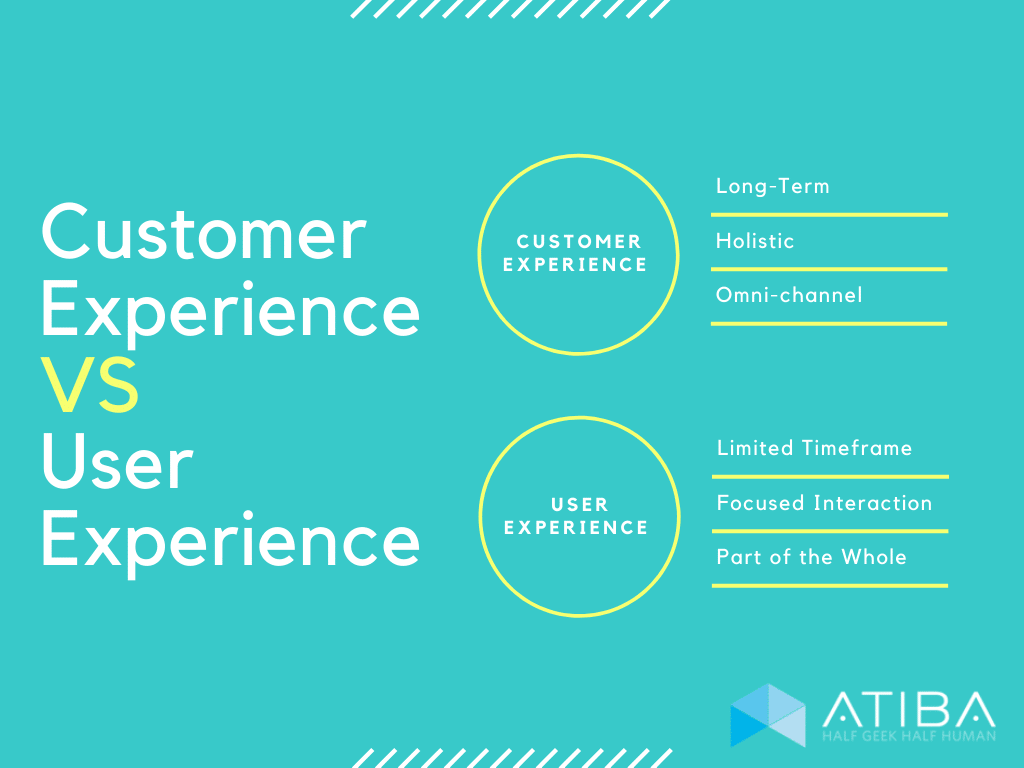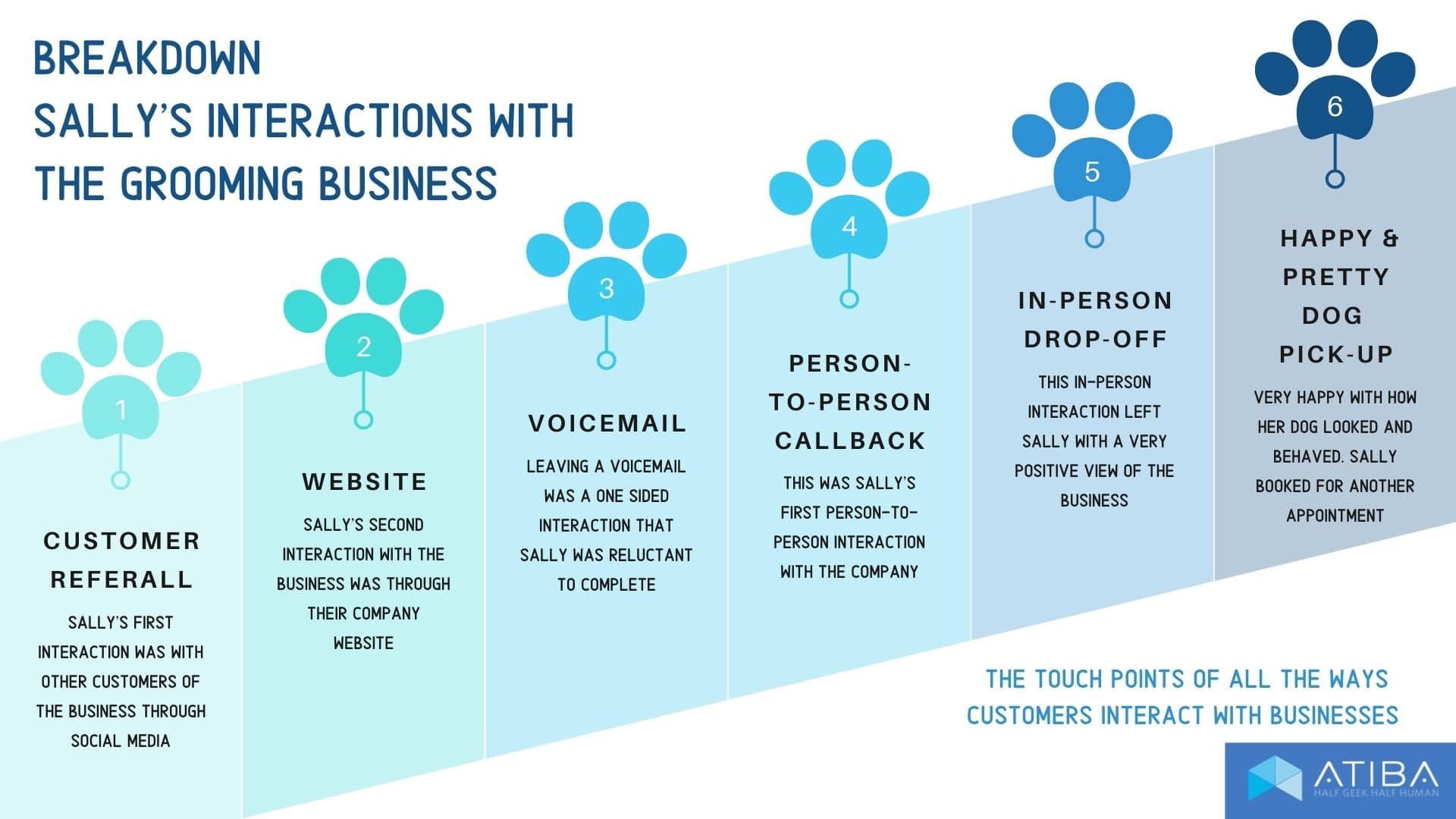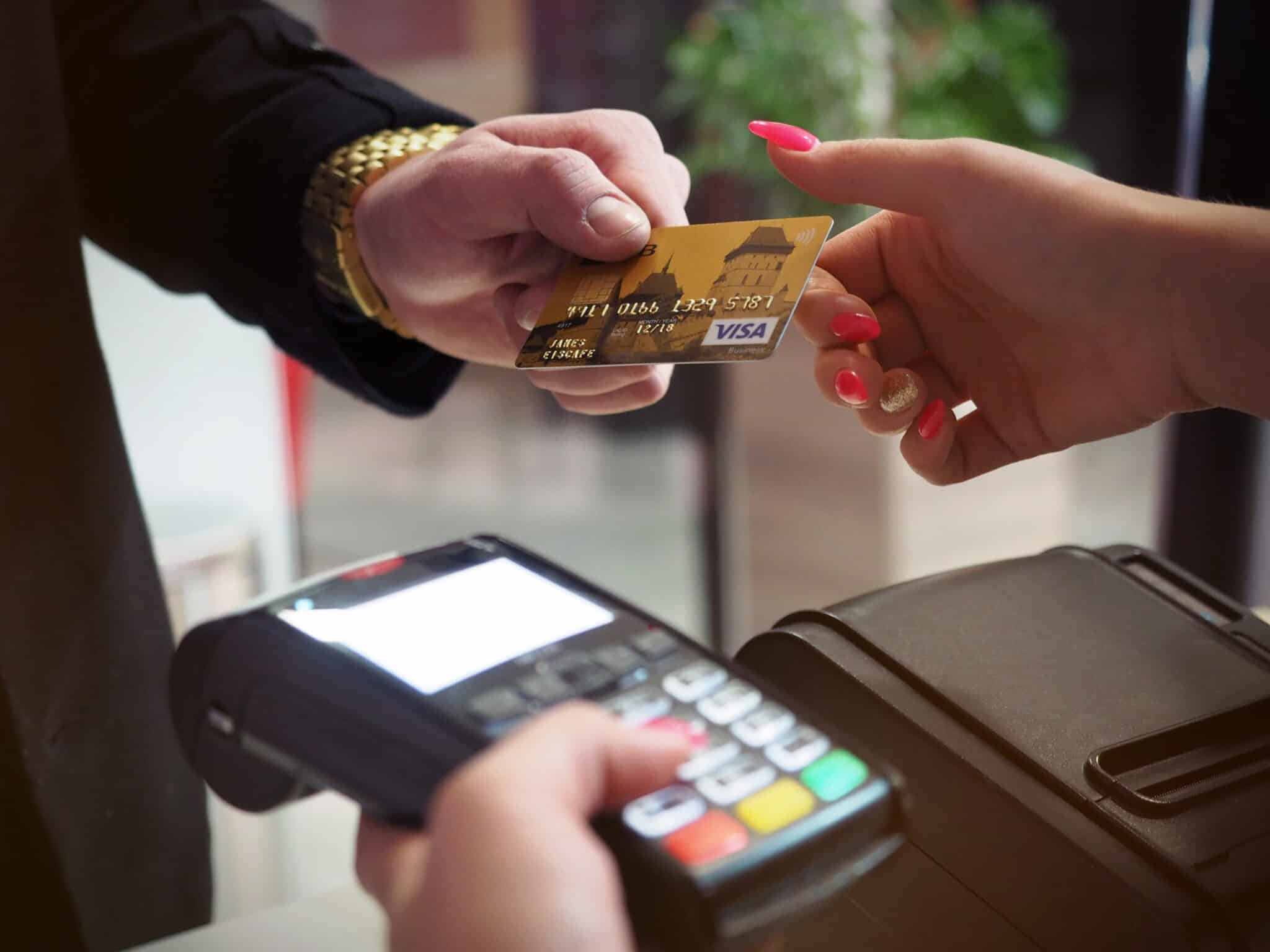Customer experience and user experience are hot buzzwords these days.
And there’s a good reason for it.
20 years ago there were fewer ways to interact with a business.
You might see an ad on TV or fly by a billboard on the interstate. If you wanted to buy from them you were probably making that purchase in person, talking to a representative of the company while you shopped around.
If not in person, you were purchasing over the phone. The success of a phone interaction depends entirely on verbal communication. But even those awkward phone calls meant that a live person was talking to a live customer in real-time.
How Customer Experience has Changed
But then, the internet came along and changed everything. It’s changed how we listen to music, get our news, and watch TV. It’s also changed the way we buy things.
We read millions of reviews. Research shows that 84% of consumers read online reviews before making a purchase.
We see and hear how influencers use products. We can even use VR to “try” a couch in our living room. And when we’re ready to buy, we don’t even need to put on pants.
We’re familiar and comfortable buying basically everything online, from clothes and housewares to our actual houses.
That massive shift from an in-person world to an online one has required many businesses to rethink how they build a relationship with their customers.
How Much Do You Know About Your Customers?
So we see the differentiation and development of two types of buyer experience: customer and user. And while they both help businesses define and improve their relationship with customers, they are different and should be used differently.
Businesses need to understand how their products and processes impact and influence relationships with their customers.
Let’s talk about the 5 things you need to know about customer and user experience:
- Customer Experience and User Experience are Different
- What is Customer Experience?
- What is User Experience?
- How You Can Use Customer and User Experience to Improve Your Business?
- What to do if Your Company Needs Help With Customer and User Experience
1. Customer Experience and User Experience are Different
What makes them different?
You might define them by saying the customer experience is the full journey through milestones that often include user experiences.
User experiences, on the other hand, are more focused.
A user’s experience might involve making a dog grooming appointment. However, customer experience encompasses your holistic experience with that business from finding them, to making an appointment, arriving at the actual appointment, picking up your dog, and making your next appointment.
That customer experience could span weeks while the user experience might only be a few minutes. The user experience could be considered a milestone in the customer experience journey.

So let’s break down the next thing you need to know: what are customer and user experience?
2. What is Customer Experience?
Customer experience is the holistic view a customer has of a business. How they feel after all of their interaction with the company. Let’s go back to the dog grooming example.
Sally’s New Groomer
Sally finds a dog grooming business by asking her neighborhood group on Facebook. Several people share their experience with the groomer and share the company’s website.
Sally visits the site and checks out their picture gallery, price list, and the About Us section. Sally can tell these people are passionate about taking care of dogs and they fit in her budget.
Sally wants to book online but…they don’t offer online bookings. So Sally calls the local number provided. She gets a voicemail and is a little annoyed but leaves a message anyway because of the positive reviews from Facebook.
The groomer calls Sally back and sets an appointment. On the day of the appointment, Sally arrives at the business address. It’s in a little house that’s been converted into a business.
Sally is surprised at how cute it looks and is pleasantly surprised by how nice it is inside. She’s quickly greeted by a smiling employee who’s expecting her. When she picks her dog up, Sally is really pleased with how good her pet looks.
Sally books a new appointment immediately.

How can we describe her customer experience?
A good way to answer that question is to ask: what would Sally tell someone who was looking for a groomer? The information she would share with that person would be her customer experience.
She might tell them how she heard about the business and that lots of people seem to love this groomer. She might also share that they don’t have a way to book online appointments and that she had to leave a voicemail (in 2020 no less).
But she’d likely end by saying the place is charming, the staff was friendly and her dog looked great and happy.
Despite some ups and downs, Sally had an overall positive customer experience and the groomer gained a new customer.
But let’s dive into that.
Sally would have preferred to book online instead of leaving a voicemail. If she’d found the website without the advice of her Facebook group, she might have given up on that groomer and found someone else.
That’s an important part of her experience. She was only willing to leave a voicemail and wait for a callback because she trusted the other customer recommendations.
The well-respected consulting and research company, Forrester, has a great breakdown of what a great customer experience should include. If you want to break down the customer experience more strategically, this is a great approach.
What Could the Groomer Learn?
Sally had many milestones in her customer experience with the grooming company.
She started with testimonials from other customers. She moved on from there to their website. When she couldn’t make an appointment online, she called and interacted with their voicemail.
When she got a callback for an appointment, she spoke in person with an employee of the company.

The day she dropped off her dog for its appointment, she visited the actual business in person and interacted again with the staff. The dog was so well-groomed and cared for that when she picked him up she immediately made a follow-up appointment.
If the grooming business had the opportunity to hear Sally’s full experience, they could learn a lot about how customers feel about their business.
That customer experience story tells them what they do well and where they have the opportunity.
Analyzing the Customer
What are a few key learnings from Sally’s experience for them? Let’s use the Forrester approach to analyze the customer experience.
- Useful: She didn’t have strong feelings about the cost but she clearly liked the result because she booked another appointment immediately so they must have been useful.
- Usable: But she struggled with the appointment process, and would have abandoned the process if not for the reviews of folks on Facebook. So usability was a challenge.
- Enjoyable: And enjoyable was also a mixed bag for Sally because she didn’t enjoy the voicemail or callback experience.
What lessons can the groomer take away from all this?
- They might find that by not offering a way to book appointments online they risk losing potential customers.
- They might learn how valuable word of mouth is on Facebook and develop a social media presence for their business.
3. What is User Experience?
Ok, so now that we understand better what Sally’s customer experience was, where were the user experience elements?
The user experience is a more focused examination of one element of a customer’s journey. Take, for example, Sally’s experience booking the appointment.
Sally wanted to book online but she had to call, leave a voicemail, and wait for a callback. So, if the groomer wanted to create a better user experience, they might consider creating an online booking system.
If the groomer wanted to modernize how they took appointments, a good place to start that process is by asking themselves a few questions:
- Who is our customer?
- What does our customer want?
- Why do they want that?
- Where does our current process fall short?
- Can we offer that solution in a way that aligns with our brand?
The answers to those questions will guide the business in developing a better user experience. At this point, you might have realized that a solid understanding of the customer experience is the best way to answer these questions.
4. How to Use Customer and User Experience to Improve Your Business
If you aren’t constantly asking yourself, “Are we meeting our customer’s needs and expectations?” now’s the time to start.
The past few years have changed customer/business relationships in ways that were difficult to anticipate and challenging to address. There’s no reason to believe that tech and social changes won’t rapidly continue to impact those customer/business relationships in the future.
By understanding the holistic customer experience, a business can identify the user experience opportunities they may have.
Once those opportunities are identified, the company can further use what they know about what the customer does and doesn’t want by again turning to what they learned in the customer experience.
While Sally’s example is good for understanding what a customer and user experience are, there’s one more thing we haven’t talked about when using learnings from those.
Sally is one customer.
While the knowledge you get from one customer is likely a good representation for many more people, it’s still just one customer. Reliable and useful customer and user experience data should be collected for many people to really understand what a business does and doesn’t do well to serve its customers.
That brings us to the final thing you should know.
5. What to do if Your Company Needs Help With Customer and/or User Experience
By now you’re probably bought into the value of good customer and user experience data to help improve your business. But how do you do that?
The easy answer is to ask your customers. Be broad about who you consider a customer. If Sally had visited the website but never made an appointment you’d want to know why.
By asking both potential and purchasing customers what their experience was, you’ll learn how to provide a better experience overall.
But collecting data can be challenging. If you don’t already have the applications and processes in place to collect, organize, store, and analyze customer experience and user data, it’s probably time to investigate options for getting those in place.
Conclusion
From building solutions in-house with the help of IT teams on staff, to contracting that work out to knowledgeably and experienced tech firms, there are different ways to meet the need.
And there are benefits to both. While an in-house team might save you money in development, they’ll likely lack the knowledge and experience needed to do the job quickly and effectively.
Hiring a consultant who’s created customer and user experience solutions is often the fastest way to get that valuable information.
For smaller businesses without robust in-house IT teams, it’s often the most affordable option as well. Check out this article for tips on when and how to hire consultants for IT projects.
Once you have the data to understand the experience, you can start the process of creating solutions your customers will love.
Here at Atiba, we specialize in custom software development solutions, including customer and user experience data solutions. Our experts have plenty of experience in working with businesses of all sizes to find something that fits your needs and helps you accomplish your business goals. Reach out to us today for your project quote!



